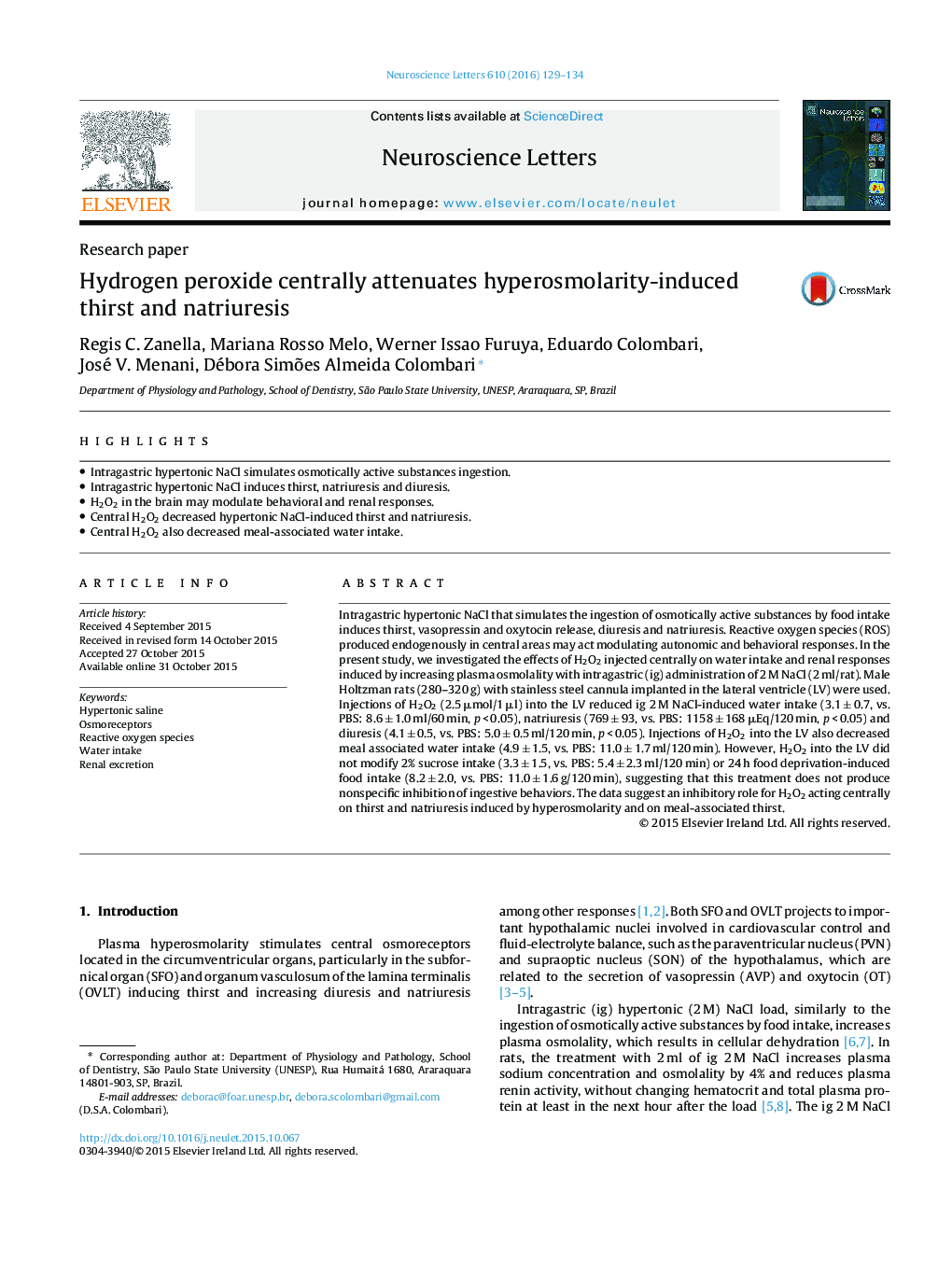| Article ID | Journal | Published Year | Pages | File Type |
|---|---|---|---|---|
| 6280227 | Neuroscience Letters | 2016 | 6 Pages |
Abstract
Intragastric hypertonic NaCl that simulates the ingestion of osmotically active substances by food intake induces thirst, vasopressin and oxytocin release, diuresis and natriuresis. Reactive oxygen species (ROS) produced endogenously in central areas may act modulating autonomic and behavioral responses. In the present study, we investigated the effects of H2O2 injected centrally on water intake and renal responses induced by increasing plasma osmolality with intragastric (ig) administration of 2 M NaCl (2 ml/rat). Male Holtzman rats (280-320 g) with stainless steel cannula implanted in the lateral ventricle (LV) were used. Injections of H2O2 (2.5 μmol/1 μl) into the LV reduced ig 2 M NaCl-induced water intake (3.1 ± 0.7, vs. PBS: 8.6 ± 1.0 ml/60 min, p < 0.05), natriuresis (769 ± 93, vs. PBS: 1158 ± 168 μEq/120 min, p < 0.05) and diuresis (4.1 ± 0.5, vs. PBS: 5.0 ± 0.5 ml/120 min, p < 0.05). Injections of H2O2 into the LV also decreased meal associated water intake (4.9 ± 1.5, vs. PBS: 11.0 ± 1.7 ml/120 min). However, H2O2 into the LV did not modify 2% sucrose intake (3.3 ± 1.5, vs. PBS: 5.4 ± 2.3 ml/120 min) or 24 h food deprivation-induced food intake (8.2 ± 2.0, vs. PBS: 11.0 ± 1.6 g/120 min), suggesting that this treatment does not produce nonspecific inhibition of ingestive behaviors. The data suggest an inhibitory role for H2O2 acting centrally on thirst and natriuresis induced by hyperosmolarity and on meal-associated thirst.
Related Topics
Life Sciences
Neuroscience
Neuroscience (General)
Authors
Regis C. Zanella, Mariana Rosso Melo, Werner Issao Furuya, Eduardo Colombari, José V. Menani, Débora Simões Almeida Colombari,
